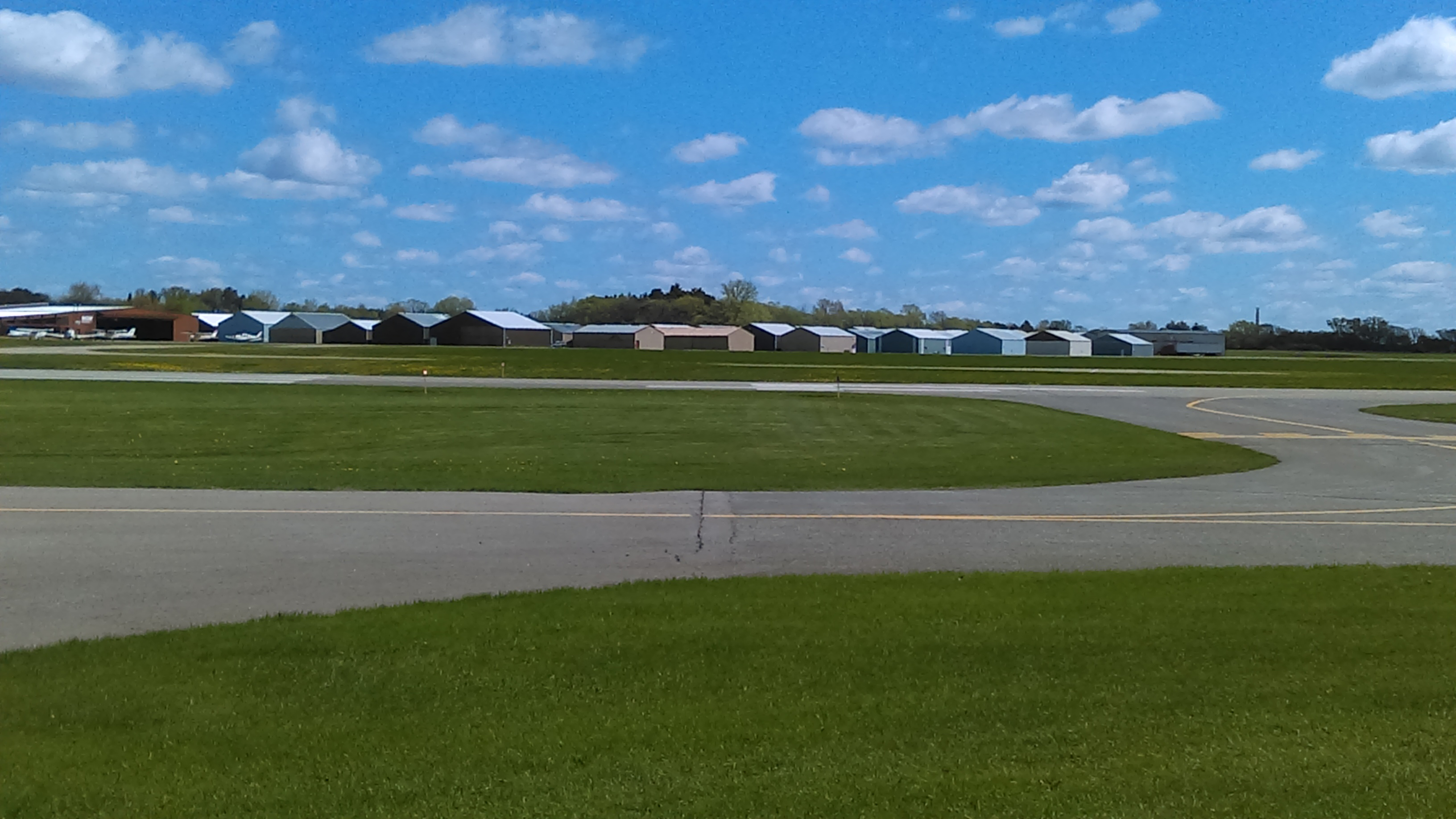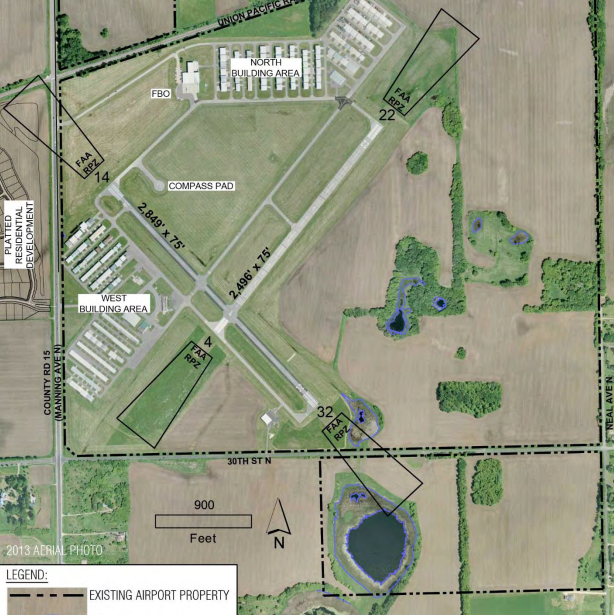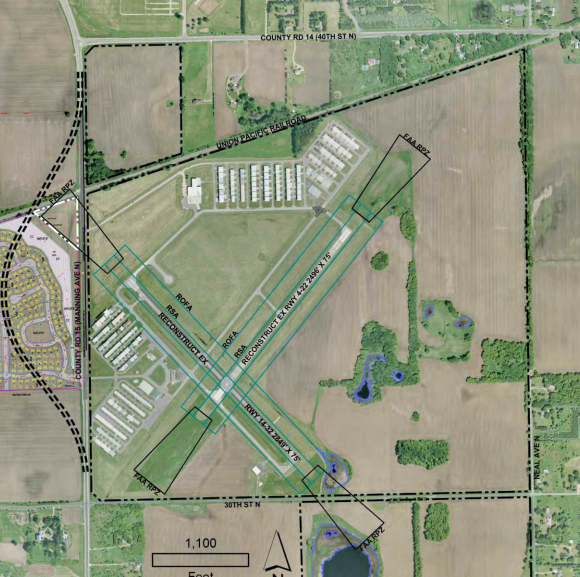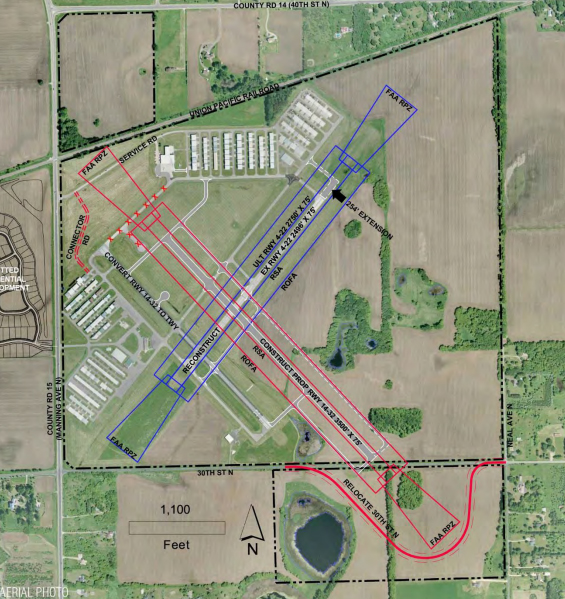
The Metropolitan Airports Commission has now submitted plans for expansion of Lake Elmo Airport to the Metropolitan Council, a plan which has drawn the ire of airport neighbors.
MAC wants to relocate and lengthen the airport’s smallest runway, which would require a “safety area” that crosses what is now 30th Street. That would require moving 30th Street.
Among other concerns, neighbors worry that an expansion will lead to more air traffic. But in the draft report submitted to the Metropolitan Council, MAC concedes something I noted here a week or so ago — there are likely to be fewer pilots who use the airport, not more.
Recent activity levels at Lake Elmo Airport suggest that the number of based aircraft is declining slightly faster than predicted in the Base Case forecast scenario, but that aircraft operations are relatively stable. This indicates that the operations per based aircraft for those remaining at the airport are increasing.
The forecast scenarios indicate that future economic growth, fuel prices, technology, and national aviation policy may have a major impact on the development of general aviation.
An extension to the primary runway would also affect the forecasts, though not to the same extent as economic growth. Therefore, it is prudent to monitor actual local economic conditions closely along with aviation activity, and modify the phasing of facility improvements at the airport if that activity departs materially from forecast levels.
Why would existing pilots be flying more often even though there are fewer of them? For the same reason people are driving more. The price of aviation fuel, though much higher than auto fuel, has dropped significantly in the last year.
MAC said the existing runway needs to be moved if it is to be lengthened because otherwise Washington County would have to divert busy Manning Avenue around a “runway protection zone.”
Presently, houses are sprouting in the area where the diversion would need to go. It says if the runway isn’t relocated, MAC would have to buy the private property where the houses are being constructed.
Moving the runway northeast and diverting 30th Street would eliminate the need to buy the property, MAC said.
* It provides compatible RPZs entirely on airport property for the replacement Runway 14-32.
* It provides a runway length of 3,600 feet, which is a suitable length to accommodate the design aircraft family. After the 3,600-foot length is constructed, the primary runway will be fully builtout in terms of RPZ compliance, with no further extensions contemplated during the 20-year planning horizon. This will give the surrounding municipalities assurance of the airport’s future footprint for comprehensive community planning.
* It maintains adequate wind coverage and the continuity of the existing operational footprint as the primary runway remains on the 14-32 alignment.
* It optimizes the use of existing airport property, including that purchased in the late 1960s and 1970s for the relocation of 30th Street N. No additional property acquisition is required.
* It accommodates the future expansion needs of County State Aid Highway 15/Manning Avenue in its current alignment. Urban development is expected to increase west of Lake Elmo Airport and adjacent to this portion of Manning Avenue which will need to be expanded in the next decade to accommodate current and expected future traffic.
* It allows the development program to advance more efficiently without the time needed to complete an RPZ Alternatives Analysis.
* It minimizes operational disruptions during construction as the replacement Runway 14-32 can be constructed with the existing Runway 14-32 in operation.
* It is consistent with the long-term vision for the airport, which has included a relocated and longer primary runway for decades.
In its final report, MAC says it changed its plan to accommodate neighborhood opposition. It reduced the length of the proposed runway by 100 feet, it reduced the size of a runway protection zone, and it changed the plan to divert 30th Street to allow it to rejoin Neal Avenue at its current intersection.
MAC says it still needs to conduct tests to determine the noise impact of its plan.
Here’s the final draft plan submitted to the Metropolitan Council.
Related: As opposition to airport mounts, more people move next to it (NewsCut)
Lake Elmo airport shovels sand against neighbors’ tide (NewsCut)



